This activity allows children to create their very own rock lab! The rock investigation includes five different easy tests to allow children to group and find out how to identify rocks based on their appearance and properties. It’s a brilliant first introduction to rocks for kids with lots of fun rock activities for kids of all ages.
There’s also a free downloadable booklet containing
This activity is also suitable for studying rocks as part of Key Stage 2 Science.
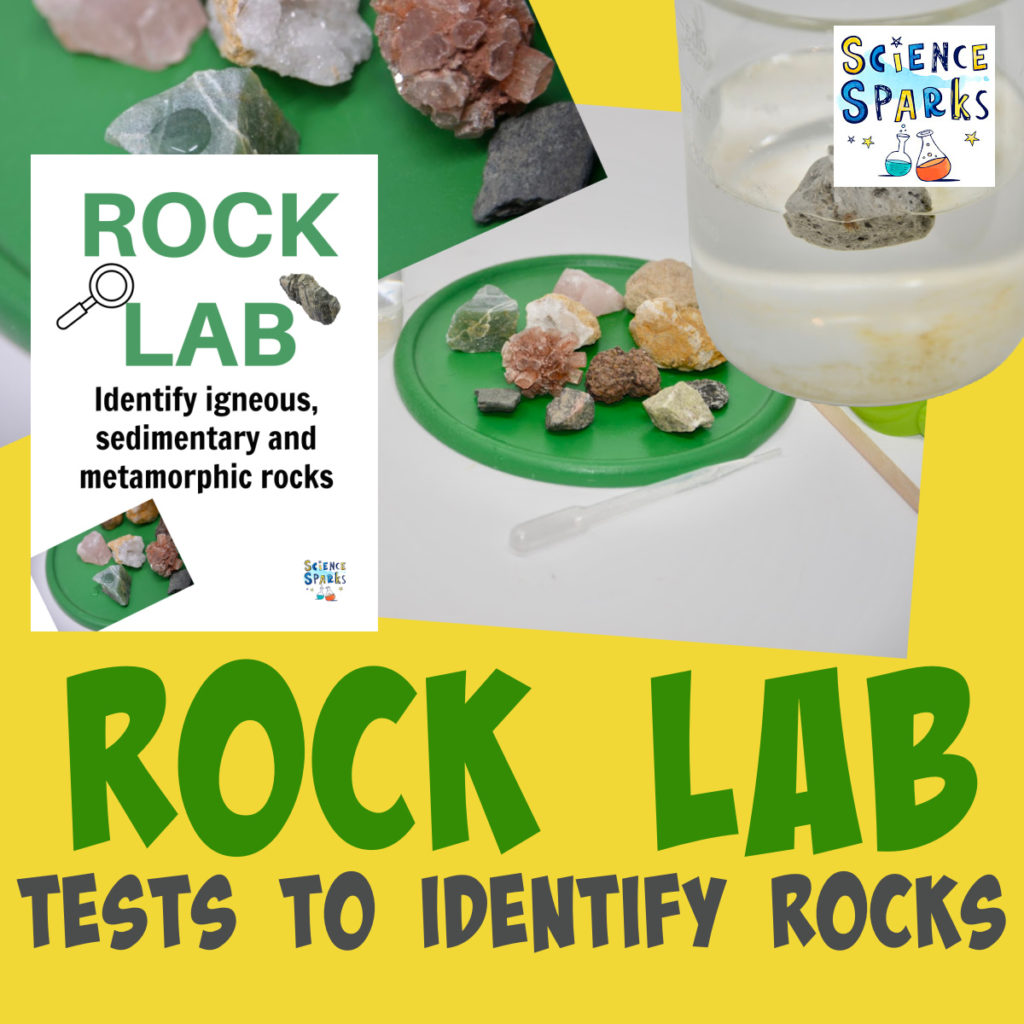
Rock Lab – Introduction to Rocks for Kids
Children are given 6 different rock samples with the challenge of working out if they are metamorphic, igneous or sedimentary based on the results of their testing.
Key learning point – igneous and metamorphic rocks tend to have similar properties and are different to sedimentary rocks.
Background Information – Igneous, Sedimentary and Metamorphic Rocks
What are Igneous Rocks?
Igneous Rocks are formed underground where temperatures are hot enough to melt rock into liquid ( molten rock ). Igneous rocks do not contain fossils as these would have melted when the original rock melted.
Intrusive Igneous Rocks form underground from magma ( molten rock). When the magma cools it becomes igneous rock. This type of rock is formed slowly as it takes a long time for the magma to cool and harden.
Extrusive Igneous rocks form when molten rock comes out of the ground. We call this lava. Lava cools to form a type of extrusive igneous rock. This type of rock forms quickly once the lava is erupted onto the surface of the earth.
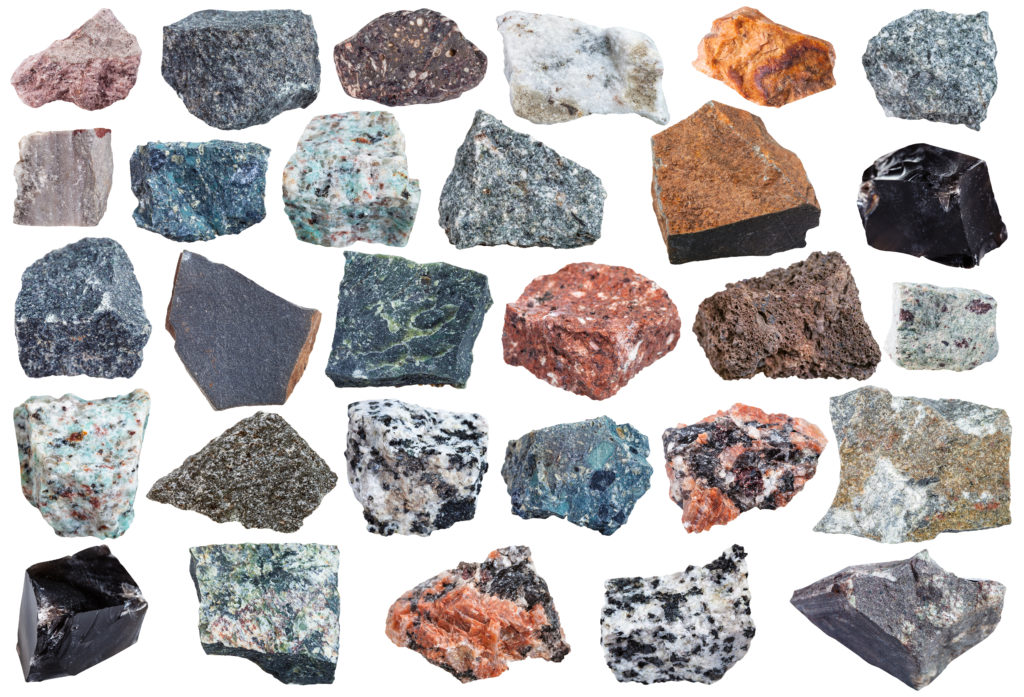
Sedimentary Rocks
Sedimentary Rocks form under the sea. Layers of broken rock transported from rivers build up at the bottom of the ocean. The deposited rocks build up in layers called sediments. This is known as sedimentation. As more and more layers pile up they start to push down on the lower layers. This is called compaction. Over a long period of time, water is squeezed out of the layers of rock and salt crystals form. The salt compounds stick the pieces of rock together. This is called cementation. Eventually ( it can be millions of years ) sedimentary rocks form.
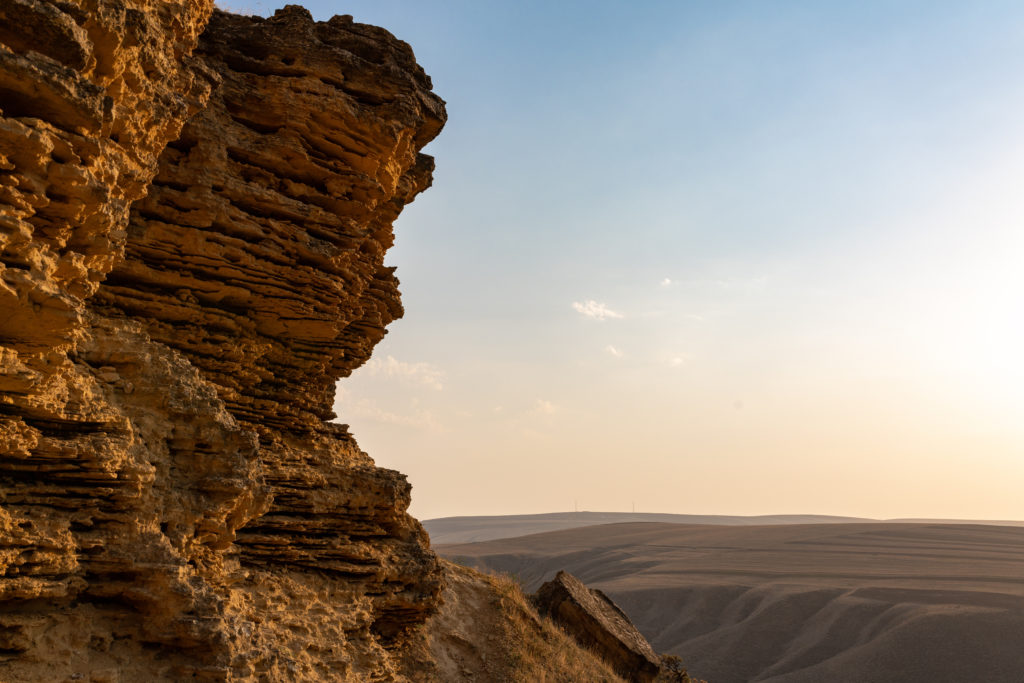
Metamorphic Rocks
Metamorphic rocks form from sedimentary or igneous rocks that have been changed by heat or pressure underground. These rarely contain fossils.
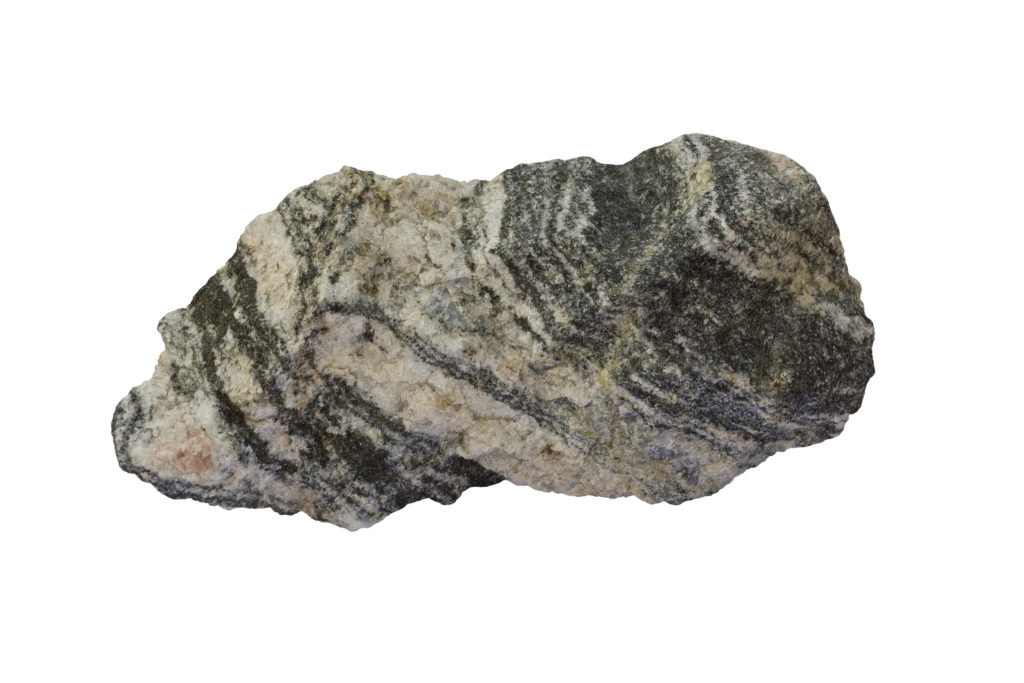
Man-Made Rocks
Man-made rocks – these are known as anthropic and are made or changed by humans. Examples are concrete, brick.
Aims of Rock Lab
Rock Keywords
Rocks, sedimentary, volcano, formation, human-made, anthropic, natural, metamorphic, igneous, pebble, granite, concrete, brick, chalk, slate, limestone, permeable
What is the Rock Cycle
Rocks on Earth do not stay the same over time. They are impacted by weather, erosion and movement caused by volcanoes and earthquakes. The process is called the rock cycle and there are many routes through it, for example sedimentary rocks can be changed into metamorphic rocks which could then be eroded and deposited in the sea and then changed into new sedimentary rocks.
The diagram below shows the rock cycle.
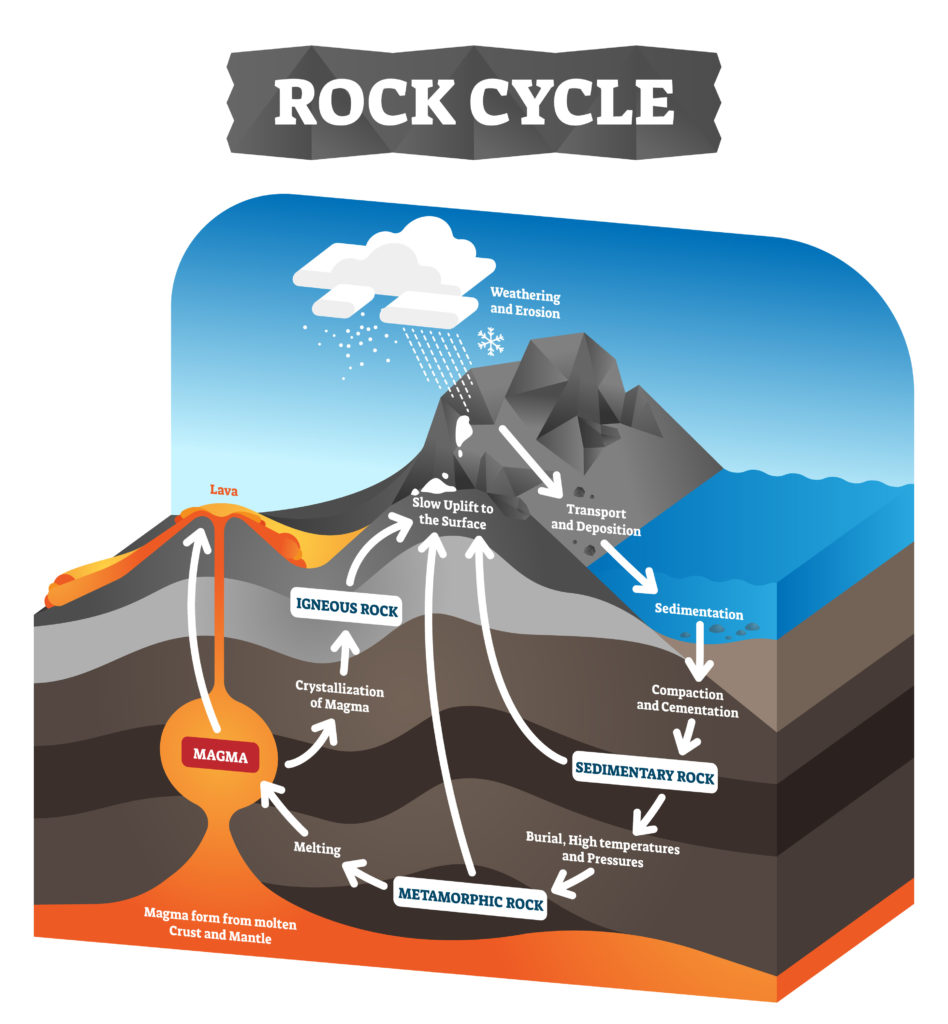
Rock Activities for Kids – Create your own rock lab
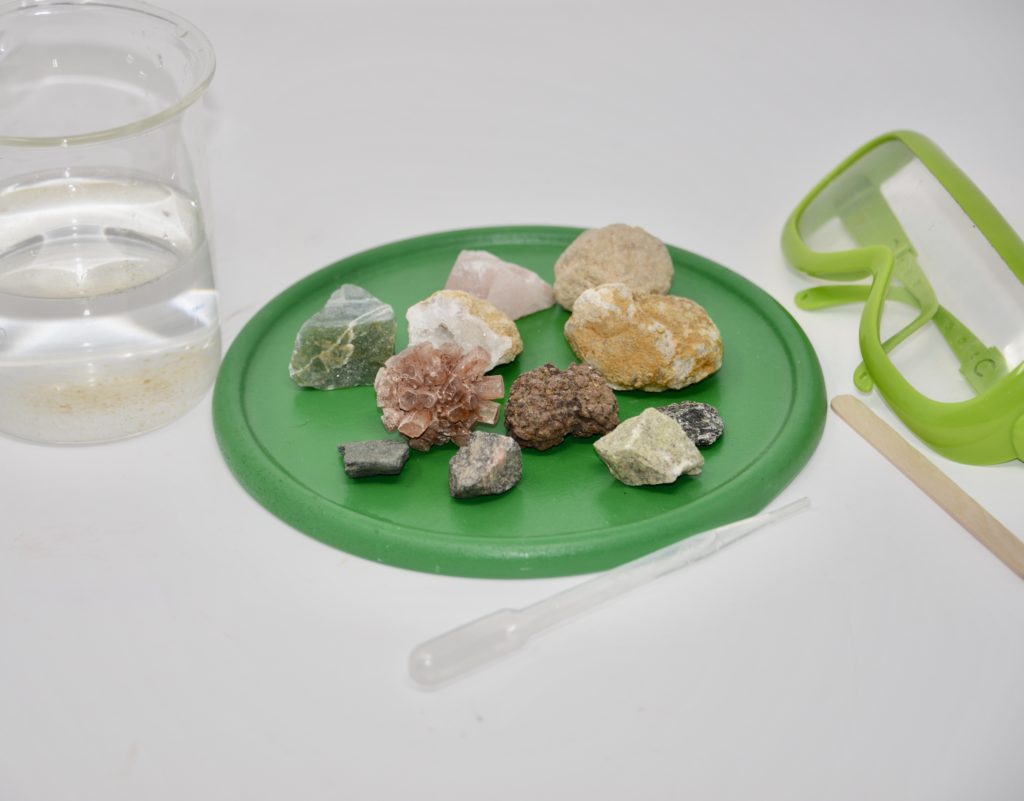
Rock Lab Materials
Set of rocks containing sedimentary, metamorphic and igneous rocks.
Sedimentary – sandstone, chalk, limestone
Igneous – granite, basalt
Metamorphic – marble, slate
Magnifying glass
Safety goggles
Sand paper
Lolly stick or wooden spoon
Medium sized container
Vinegar
Water
Rocks for Kids – Rock problems to work through
Use the tests below to solve these problems.
Problem 1
Harry’s teacher has asked him to sort a collection of rocks into igneous, sedimentary and metamorphic. Can you help him?
Problem 2
Imagine you’re trapped on an island. You’ve found an old piece of slate rock, but now need a softer rock to write a message on it. What type of rock would you look for? What properties does that type of rock have that allows it to be used to write a message?
Problem 3
Find a rock from your samples with rounded grains and one where the grains interlock. Which do you think would be best to use as a roof tile and why? Can you test the rock to see if it would keep water out of your house?
Problem 4
Sophie is doing a school project all about volcanoes. She needs to find a rock from her collection that formed from lava. Can you help her? What type of rock does she need and how can she identify it?
Problem 5
Sam has three rocks one is sedimentary, one igneous and one metamorphic. Sam wants to ask his friend who lives far way to help him identify them. Can you write a letter for Sam to send his friend telling him about the properties of each rock? Remember to give enough information so Sam’s friend can identify each one.
More Rock Activities for Kids – Download rock identification problems to solve
Things to think about – make it fair!
Children should think about how to make each test fair.
Use the same rocks ( similar size )
Same equipment as each other and for each rock
Same time to do the investigation
Test 1 – What does the rock look like
Children should consider that different types of rocks have a different texture and appearance.
You’ll need
Magnifying glass
- Look at each rock with the magnifying glass and make notes on the features of each.
- Try to decide which type of rock each sample is.
Sedimentary rocks contain grains in layers, these rocks often contain fossils of animals and plants which became trapped in the sediment as the rock formed.
Igneous Rocks – contain randomly arranged crystals. If the lava cooled quickly as the rock was formed the crystals are small, and if the lava cooled fast the crystals are bigger.
Metamorphic rocks – these are often crystalline and sometimes have visible bands.
Test 2 – Is the rock hard or soft
Igneous and metamorphic rocks are harder than sedimentary rocks. Igneous rocks are usually the hardest.
Challenge – Order the rocks from softest to hardest
You’ll need
Lolly stick or wooden spoon
Sand paper
- Rub the rock with your fingers, does it crumble or leave bits on your hands?
- Can it be scratched with a lolly stick or sand paper? Harder rocks are more difficult to scratch.
- Place the rocks in order from softest to hardest. Considering igneous rocks are usually the hardest and metamorphic the softest, do the results from this test agree with test 1?
Sandstone and chalk should be identified easily here
Real life uses of soft rocks
Examples of soft rocks – Chalk is a soft rock, it breaks and wears down easily which is why it’s handy for writing on chalkboards.
Some rocks are harder than others, hard rocks are useful for buildings and floor and wall tiles. Examples of hard rocks are granite and marble.
Test 3 – permeable or impermeable
Permeable rocks let water soak through. Sedimentary rocks are permeable.
If water soaks into the rock it is permeable, if the water rolls off the surface it is impermeable. Impermeable rocks do not let water through.
Materials – Permeability test
Pipettes
Beakers
Water
Use the pipette to drop water onto each rock sample and record whether the water soaks in or remains on the surface.
Children should be able to separate sedimentary rocks from igneous and metamorphic.
Sedimentary rocks often have rounded grains, this is another way they can be identified. The rounded grains allow water to get into the gaps.
Rocks with interlocking grains are usually harder and don’t absorb water.
Real life uses of impermable rocks
Slate – this is an impermeable rock, which is why it is a good material for roof tiles.
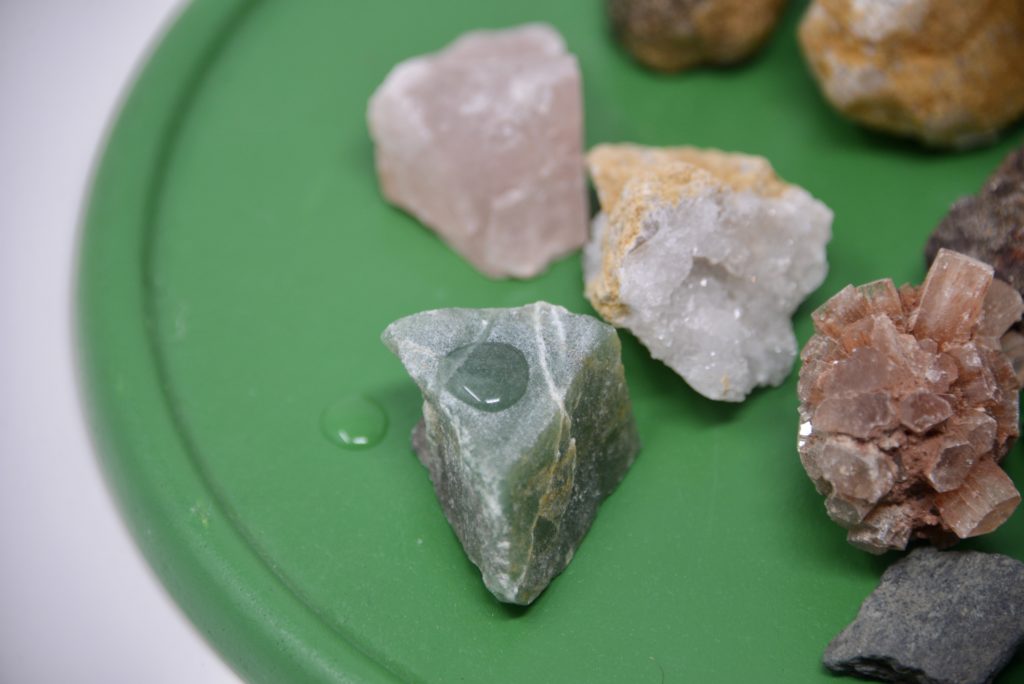
Test 4 – How dense/buoyant?
Metamorphic and igneous rocks are generally more dense than sedimentary rocks. Sedimentary rocks form closer to the surface and are less dense than those formed deeper down as rocks formed near the surface have been compacted less.
It an object is less dense than water it floats, if it is denser than water it sinks. Testing to see whether a rock floats is an easy way to find out how dense it is.
Note – pumice is an igneous rock but also floats! This is because it contains lots of air bubbles, making it very light.

Materials – rock buoyancy test
Container
Water
Rocks to test
Pen and paper
Testing sheet, containing a table to record predictions and results.
- Feel each rock one by one, think about how heavy it is. Predict whether the rock will sink or float.
- Place each rock into the water one at a time.
- Record which rock samples float and which sink.
- The rocks that sink are the most dense.
Children should see a link here between the permeability test and density.
Test 5 – Rock Acid Test
Sedimentary rocks often contain the remains of animals and plants ( fossils ). The calcium carbonate in the fossils means they fizz when vinegar is dropped on them.
- Drop a little vinegar onto each rock, and record whether it reacts with the rock or not. If the rock reacts with vinegar it will fizz.
The fizzing you see is carbon dioxide released from the reaction between calcium carbonate in the fossils and acetic acid in the vinegar.
Only the sedimentary rocks should react with the vinegar.
Example Rock Identification Questions
What is a rock?
Are rocks alive?
How do rocks form?
Are there rocks everywhere?
Which type of rocks contain fossils?
What are the three types of naturally occurring rocks?
What is a geologist?
Which type of rock would make a good roof tile?
How can you tell the difference between a rock that absorbs water and one that doesn’t absorb water without testing it?
Rocks for Kids Extra Challenge – Identifying Rocks
Gather rocks from your local area and classify them based on their appearance and properties.
Design a flow chart that will help other people identify rocks.
Make a sedimentary sandwich to find out how sedimentary rocks form!
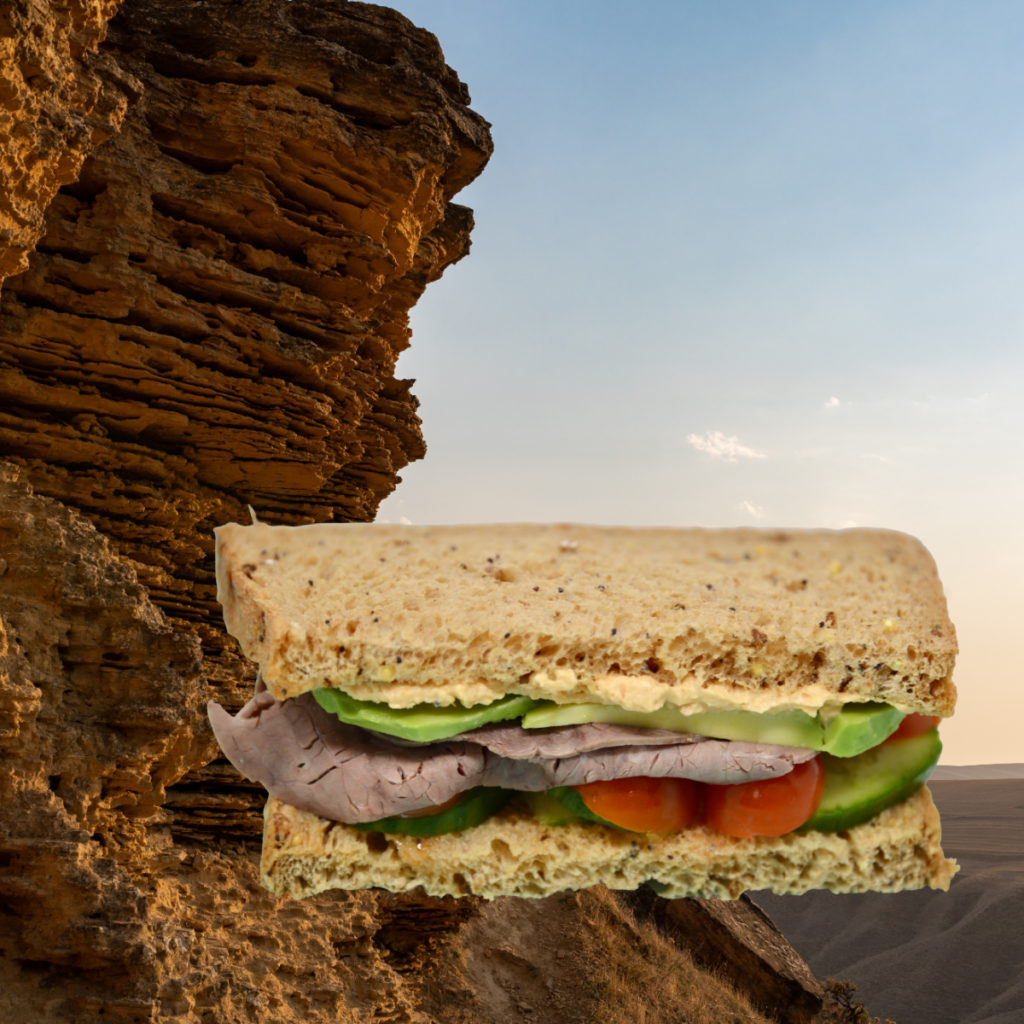
Learn about plate tectonics with an orange!!
Make your own fossils and learn about Charles Darwin at the same time!
Outcomes – Rock Identification for Kids
This activity is suitable for Key Stage 2 – Rocks, soils and fossils
Children work scientifically by observing rocks and carrying out tests to identify and classify each sample.
After the activity children should be able to:
Name the three different types of rock
Group and compare rocks by their properties and identify similarities and differences
Know how to identify rocks based on their properties
Make and record observations
Health and Safety
Take care with children handling rocks that may give off dust.
Download for FREE – Rock Activities for Kids
Download the booklet, containing full instructions for creating a rock lab! It’s a great introduction into rocks for kids!
Affiliate links
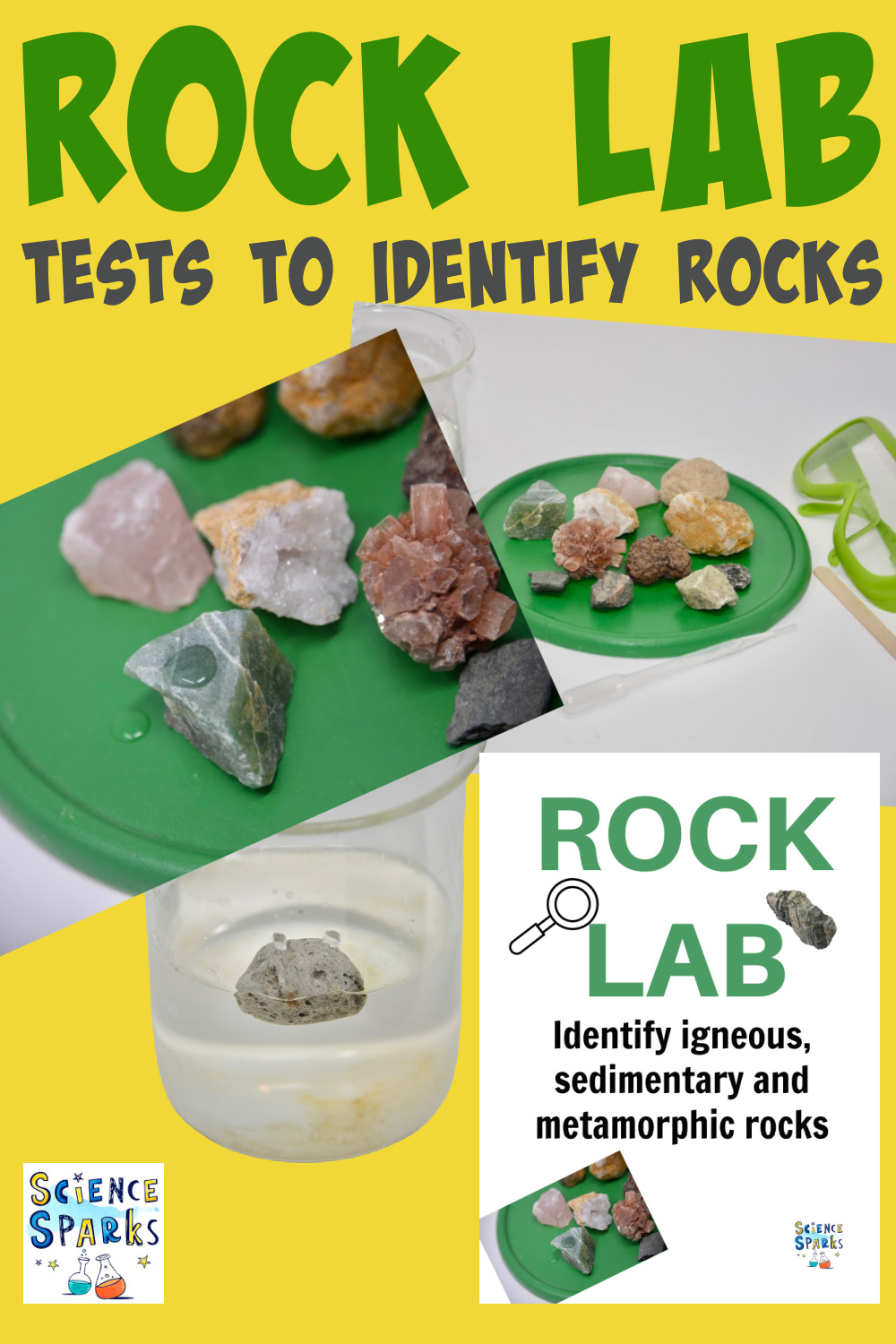


Last Updated on May 3, 2021 by Emma Vanstone

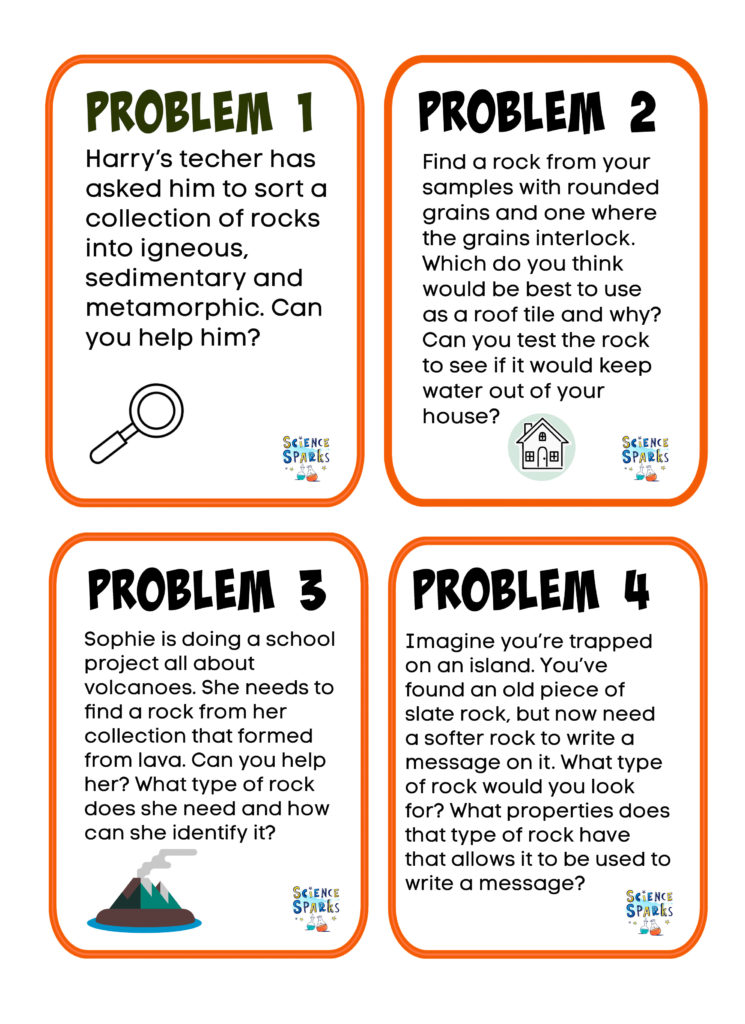
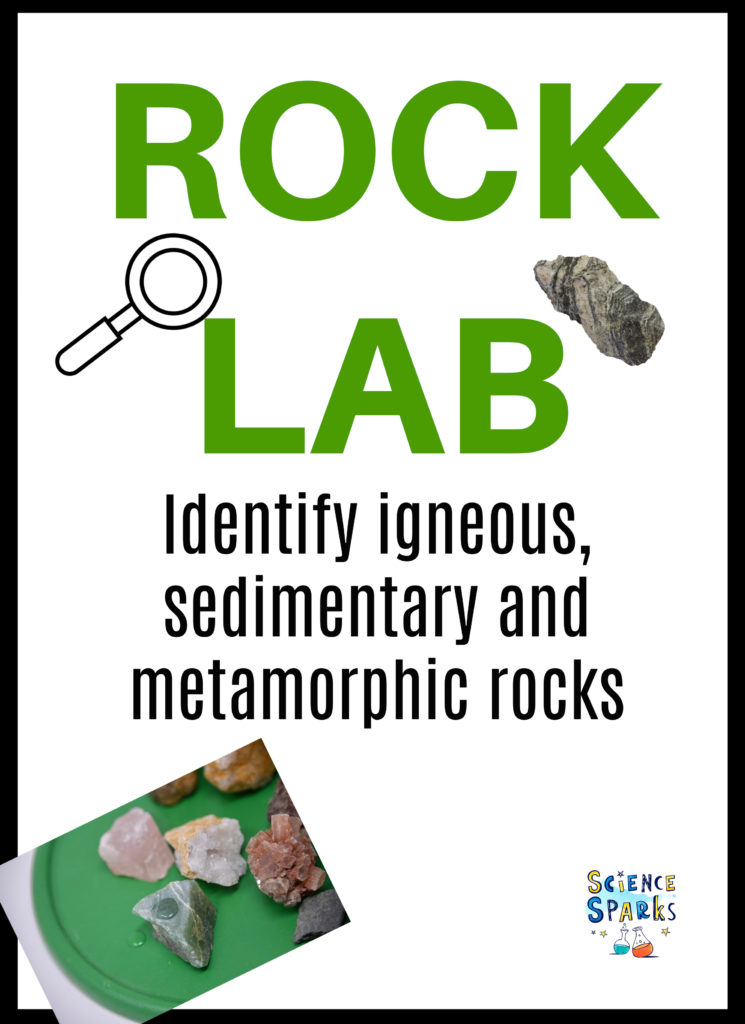
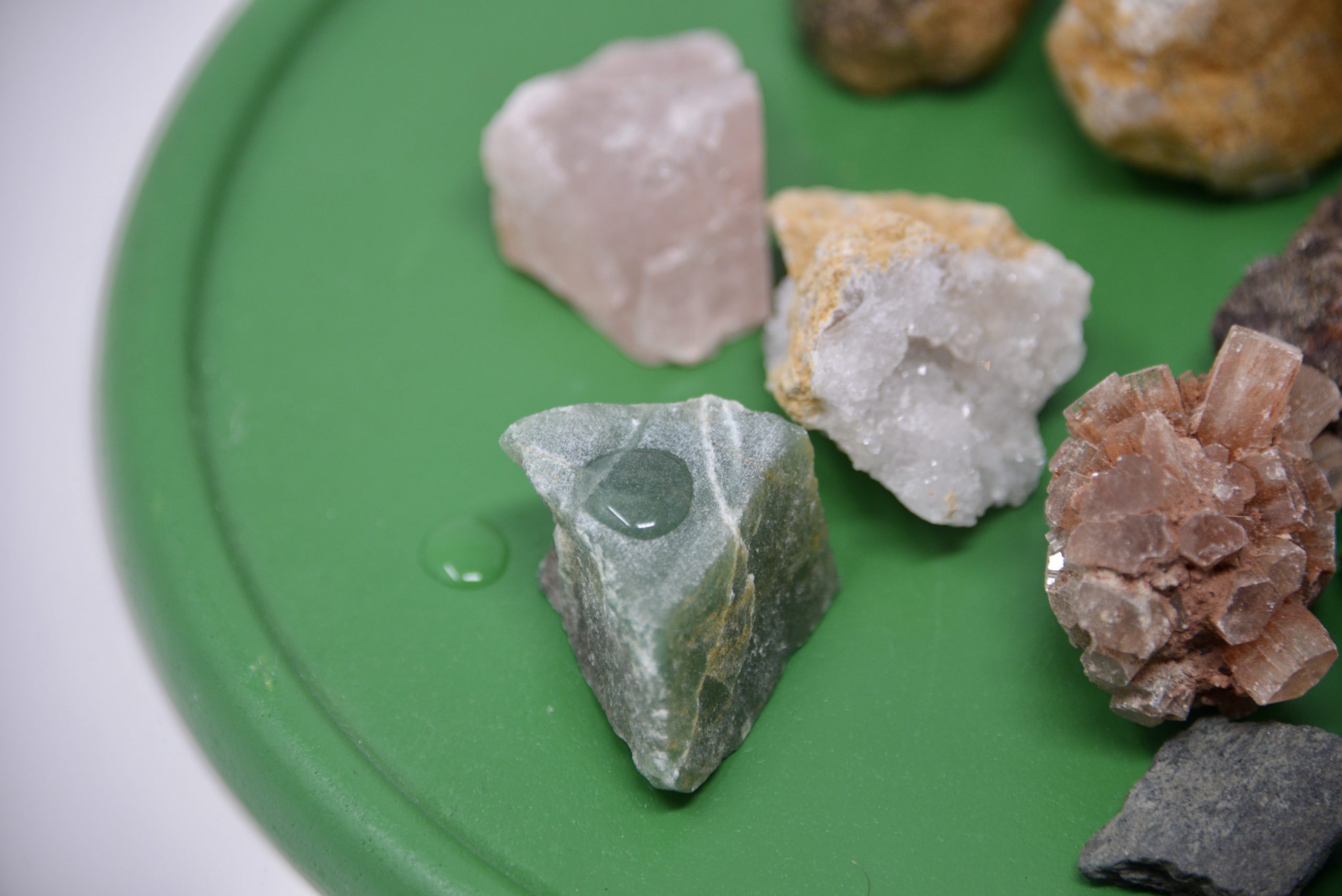
Leave a Reply